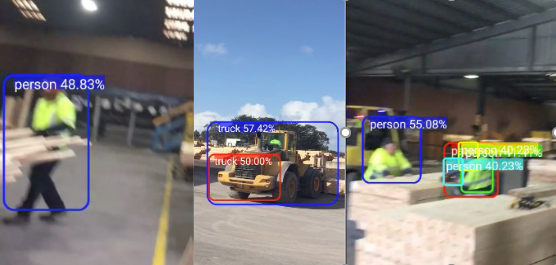Wearable sensors for improving occupational health and safety of workers in the forestry industry: a pilot prototype for harvesting and processing operations
Lead Researcher: Professor Christopher Chow
The Project
This project will evaluate workwear embedded with smart sensors for monitoring workplace health and safety hazards. The potential to provide direct early warning advice to individuals will be evaluated.
The project has a primary goal of understanding the needs, challenges, and opportunities of using sensor-based remote hazard monitoring and developing a workwear embedded with such technology for harvesting and sawmilling operations in order to ensure the wellbeing of the workers.
The feasibility study suggests that the current proximate sensor based wearable devices are not suitable for the identified scenarios for reasons such as lack of required network infrastructure, extra hardware cost and potential accuracy due to signal interference. Therefore, the project team focused on developing an adaptable image-based object detection
algorithm which can be easily implemented on a wide-range of devices (e.g. wearable smart devices on vest and helmet, centrally mounted cameras) to meet the project objectives.
Our Research Approach
The Internet of Things (IoT) trend is well underway in Machine-to-Machine (M2M) communications and is poised to radically change the world’s business environment. However, the availability of powerful inexpensive small sensing devices coupled with a communication network allow previously impractical applications to become possible, such as wearable sensor system for worker safety with real-time monitoring and warning.
UniSA, with industry partners N.F. McDonnell & Sons and OneFortyOne and funded by NIFPI, developed a solution adopted from currently available machine vision / object detection technology, the core of which is a machine learning model based on image data.
With respect to the future embeddable requirements, the project team decided to develop a mobile application using the standard on-device cameras with a proof of concept AI algorithm to test its suitability.
A DIY helmet mounted system (smart phone) was used to capture a video footage during the field trial in a work environment and the video was analysed frame by frame


Our Findings
- This project has successfully identified and assessed health and safety hazards of forestry operations based on literature, past accident data, interviews and observation/work-studies carried out in the field / identify the parameter requirements for hazard monitoring in forestry operations against readily available sensors.
- This development also aims to minimise development and implementation costs by carefully selecting low cost and easy to maintain components, and with a shared cost arrangement as part of the existing personal protection devices.
- Several successful measures (e.g. accuracy, adaptability, etc) and coverage scenarios emerged as the testing base for the proof-of-concept system with image processing accuracy of >90%.
- This project has successfully designed and delivered an image-based detection algorithm which can accurately detect vehicles and humans to alert for potential collisions
- Image-based object detection can improve safety in the identified scenarios with high accuracy;
- An app can be installed on Android phones and tablet for organisations to trial the algorithm;
- Flexible options (decentralized vs centralized monitoring) are required to move the POC to the next stage.
What is the Future of R&D for Wearable Sensors in Harvesting and Processing Operations?
Explore implementation and commercialisation options and the development of an implementation project to further confirm the applicability.
The researchers believe that the underlying AI object algorithm can be further enhanced to improve overall accuracy. For example, by combining detection results from multiple images within a short period (e.g. +2 -2 seconds), the detection accuracy could be improved significantly. Also, a new detection model can be developed (trained) for unfavourable conditions such as low ambient light.
Our Team
Researchers: Christopher Chow, Rameez Rameezdeen, Ivan Lee, Kutluyil Dogancay, Jill Dorrian, Jun Ahn, Jim O'Hehir and Braden Jenkin (Sylva Systems)
Collaborators: NF McDonnell & Sons, OneFortyOne Wood Products / Plantations, Argsen Pty Ltd
Contact information
Dr Jim O’Hehir
General Manager: Forest Research Mount Gambier
Ph: +61 8 830 28997
E: Jim.O'Hehir@unisa.edu.au
Michele Cranage
Administrative Officer
Ph: +61 8 830 28902
E: Michele.Cranage@unisa.edu.au


